A mother 5,580 times over
Sunday, May 10, 2009
“Oh God, I thank you for food, clothes and shelter, love and understanding, and for friends that are necessary for me to grow to be a strong, respectable person. Grant me self-control, self-respect and peace within. Amen.”
Around their forest green dining room, children with voices light as the wind and heavy with bass recite the pre-meal prayer Ollivette Allison penned 40 years ago.
And, with that, pork roast, corn, green beans, rolls, milk and sliced peaches are served to Allison’s 50 “babies.”
Allison, 85, is executive director of the Carrie Steele-Pitts Home in northwest Atlanta, a group home for neglected, abandoned, abused and orphaned children that was founded as an orphanage in 1888.
Allison herself was a resident of Carrie Steele-Pitts, arriving there with her two brothers on Aug. 31, 1936. She lived there through her years at Spelman College and at Atlanta University’s School of Social Work. She’s now worked there for nearly 70 years, nearly half that time as executive director. Today will be the 72nd Mother’s Day she’s spent at the home.
She knows precisely how many children have come under her wing since 1950, when she became the home’s first social worker. As of April 28, the number was 5,580.
Some of them stayed for just an hour or just a day. Some stayed for most or all of their childhood. But they are all Allison’s children.
Mae Frances Bullard, a lieutenant in the Fulton County Sheriff’s Office, was dropped off at Carrie Steele-Pitts with her sisters at age 10. She lived there until she left for Morris Brown College.
“I didn’t really get the opportunity to be around my mother a lot because my mother left when I was a baby. But in my mind, I always thought a mother was someone who was always there for the child and who loved and nurtured the child,” said Bullard, 50, of Union City. “That’s what Ollivette has been to me.”
Meaning of mother
On a recent sunny afternoon, Allison mused about Bullard and others she and her staff have cared for.
“The children come from all kinds of hurt and shocks and all kinds of disappointment, things you can’t imagine a young child should have to bear,” she said. “So you do everything the best you can and you do it with consistency, persistence and a lot of patience, love and understanding.”
“Hello ladies, come here. Come in here a minute, please!” she called out from her glass-fronted office, putting aside whatever she was doing to get a little face time with each child who passed by. “You have such pretty colors on today,” she tells a shy girl. “Why did you leave for school so early today?” she asked a boy. As he explained, she inquired about a small sore she noticed on his arm.
Allison said she doesn’t set out to be a substitute mother or grandmother. “I just try to be whatever they want me to be,” she said, “whatever they perceive me to be.”
Though she’s never told Allison, former resident Bullard said “I used to always wish I was her biological child.”
And though she’s never had children of her own, Allison has a strong sense of what motherhood means.
It’s having “a sense of caring and of being thoughtful and a sense of what cleanliness is all about, what sitting down together and eating at a table is all about,” she says. “It’s saying ‘Good morning’ and knowing that school is important, manners are important, and how you treat a child will give you the end results. Children imitate us whether we know it or not.”
Allison never misses a teaching moment, or a chance to praise. And like many mothers, she amazes her charges by seeming to have eyes in the back of her head. Her secret: positioning herself so she can catch kids’ reflections in the glass of doors and picture frames.
Preaching, praising
Dinner is “prime time” at Carrie Steele-Pitts, Allison says. As she firmly quiets the chatter of those at the decorated tables, apron-wearing older teens serve bowls and platters of food.
Dessert is followed by sharing time. One child reads a poem. A staff member offers a thought for the day. Then someone begins talking out of turn, drawing a warning from Allison. “You don’t want Ollivette to get up and do her thing,” she says. “You know I’ll do it.”
Once order is restored, it’s open mike time. A girl tells everyone she and another girl at her table have passed all of their graduation tests. There is wild applause. Another girl is excited that she will take class pictures the next day.
Then it’s Allison’s turn to speak. Naturally, moms get the last word.
“Each day you’re here you’re making a mark on what you’re going to do for the next years to come,” she preaches. “I expect you to grow up to be big strong men and women with grace and dignity, with love for your families and to get a good j-o-b. That way you can do big things for yourself and for your families and for the community.”
Allison has no plans to retire but has told her board of directors to be ready to replace her. She said she can sense that she’s almost ready to leave. But when she does, her legacy will live on.
In 2004, the Ollivette Eugenia Smith Allison Life Learning Center, complete with gym, swimming pool, kitchen and a meeting room, opened on the home’s 26-acre campus. It also holds a small chapel, anchored by a stained-glass window featuring an image of a lamb.
“A little lamb is the most humble thing in the world,” said Allison, who requested the image. “It needs a lot of protection, and that’s what children need. When you love them and pet them, they’re like little lambs.”
The Carrie Steele-Pitts Home can be reached at 404-691-5187.
“Milestones” covers significant events and times in the lives of metro Atlantans. Big or small, hugely celebrated or known only to a few —- tell us of a milestone we should write about. Send an e-mail to milestones@ajc.com or mail to Milestones, c/o Michael Gray, 72 Marietta St. NW, Atlanta GA 30303. Please include your phone number and/or e-mail address.
Not so Happy Mother's Day
I have thought of writing this for every Mother's day for years but somehow never got down to it. So finally, here I am.
I am truly happy for all those who celebrate the miraculous gift of maternal love on this planet. You are truly blessed. There are mothers who are living examples of that amazingly wondrous selfless love who have inspired greatness in this world. Mothers are big hearted; supportive, loving and loyal to their children. Even an animal mother is programmed by nature to nurture and protect. Didn’t someone say God created mothers to take his place when he is not available?
But then, in our zeal to celebrate this great blessing, we sometimes forget the 'less fortunate' among us. Not the handicapped or challenged or poor... but the least fortunate among us the mother-loving who are 'cursed' with the 'bad karma' (it seems) of imperfect mothers... more like really bad mothers, cruel mothers, mothers who messed up our lives and deny it... and those who exist in the cross sections. Yes, THAT now is the reality.
When we are up there preaching and advocating the virtues of respecting and loving mothers, let us not forget (sometimes in our self righteousness) that there are (unfortunate) people out there with valid reasons to 'hate' their mother as well; and that by not joining in the adoration, it does NOT make them lesser beings to those who do. Just as you celebrate, they are hurting equally inside. I have yet to come across a true and honest admission from those who do belong in this discreet group of people, though they are many, mainly because a fear of disapproval or being judged as an 'unforgiving, ungrateful child'. It can be a vicious circle, to end up with an 'unloving mother'... and being tagged as 'unloving child' in return. I wish for this message to go out to those fortunate people who are so ready to judge... to let it be. Unless you have not experienced a life bereft of a true mother's love, you will never know how it is, and I pray that you never will.
In this unpleasant reality, I decided to believe that no mother chooses to be a bad mother, knowingly or unknowingly, they just are. Some so bad that your whole life will be a sad (cruel) twisted result of her devastatingly damaging effects. Bad mothers are accidents (freaks) of nature, at least that's the only reason to it that I can fathom, that I can take comfort in. Because I am one of the 'unfortunates' though I clearly believe I don’t deserve it, karma or not. In this case, extremely unfortunate because the problem is so deep yet so elusive, a third person would never even realize it or want to as it would shatter all their rosy notions and images of a child cuddled up in a mother's loving embrace.
I knew something was wrong from the day I learned to differentiate right from wrong but went through years of denial. The questions I always asked then were "what did I do to deserve this", "how can I make her happy", "why is it never enough" and finally I just gave up trying which brought me to a rapid decline in self worth and love because I always thought to be a good child you must love your mother no matter what you get back. After all isn't unconditional love a natural bond between a child and mother? Each time I felt I had failed to live up to expectations, another part of me died.
I was subjected to repeated rejections (not good enough), isolation (from any moral support from others) and manipulations (of my feelings) and sabotage (when I did learn to fight). Even as I write, I am troubled, feeling if I use such strong words and there is a lingering of the absence of hope that I was wrong somewhere. Yes, there is one thing I can acknowledge today, is that my greatest tests of endurance and strengths have been through the Lessons of having had that Imperfect Mother. And for what it's worth, “Happy Mother's Day”.
Posted by: ravindranps
For these moms, a dog-day afternoon
Pedro and Princesa, a pair of very well-dressed Chihuahuas, scampered into Unleashed Indoor Dog Park like a couple late for the party.
After all, it was Mother's Day, and Princesa and Pedro were here to celebrate with their "mom," Betty Orellana.
Pedro, one handsome little dude, was decked out in a bright print shirt, khakis, tinted shades and the tiniest sandals imaginable – until you saw the shoes on Princesa, who accented her look with a sparkly frock that exactly matched mom's vivid green blouse.
The oohs and ahhs followed in their wake – "Look, look!" and "Aww, how cute!" in several variations – and Orellana doted on her kids like any proud momma.
"Their father passed away about a year ago in a motorcycle accident," said Orellana, of Mesquite, "and we didn't get to have kids.
"Pedro and Princesa are my children. They're the only kids I have."
So she decided to go out with the kids, to a party with other moms and their "fur babies" to be treated and pampered and, for once, to feel they weren't left out on Mother's Day.
"It's wonderful!" Orellana said. "When one of the ladies here told me they were having a special Mother's Day, I couldn't believe it!"
Kelly Acree, an owner and co-founder of Unleashed in Far East Dallas, said that when she and her partners assembled a business plan for the indoor dog park – the first of what they hope will be many – they noticed an interesting demographic development.
"We saw that young people weren't getting married as early as they used to, and that a lot of single guys and girls have a pet as a 'child,' " Acree said. "There's a real trend in society – more humanization of pets. It used to be they spent their time out in the yard. Now they sleep in the bed with you."
And the pets help meet basic human needs of love and companionship for people who often have no one else.
Call it puppy love.
"I don't know what I would have done without Pedro when my husband died," Orellana said. "He sure filled a void when I lost the man I loved."
Across the room, new arrival Carrie Johnson of Dallas took in the scene – lots and lots of women and men and a whole bunch of dogs romping and wagging and having a great time.
The grown-ups carried gift bags and sipped wine and nibbled candy or cakes, or maybe enjoyed the ministrations of a masseuse. And the dogs were busy being dogs.
"This is so cool," Johnson said, leading in Sebastian, a little fluff ball of a Shi-Tzu.
"Mother's Day can be hard when don't have children. You feel like it isn't a day for you.
"But this is a day for all of us.
By: MICHAEL E.YOUNG / The Dallas Morning News
Happy Mother's Day to the mothers of special needs children
.jpg) The "perfectly beautiful son" has a son of his own.
The "perfectly beautiful son" has a son of his own.
Mother’s Day is coming and I thought it would be a good idea to shine the limelight on the very special mothers of the very special children who were born with, or later developed, disabilities. These mothers have to deal with most of the same confusing challenges that mothers of able-bodied children do along with some that can scarcely be imagined by mothers who haven’t “been there.”
Some of you may remember reading in my blog, Children of Disabled Parents Can Be Extra Resilient and Empathetic that my husband, Michael has cerebral palsy. Before we were married, his mother told me a story about Michael coming in the house one day, upset because some children had been making fun of him.
She took him to a full-length mirror and stood in front of it with him. They looked at their reflections together and my mother-in-law said, “Look at yourself. That’s your body and it’s beautiful.”
That story stayed with me and prompted me to write this “gift” for her. My husband, a motivational speaker, often uses it to close his speeches and I have plans to convert it into a book. But I will take it out here, in honor of Mother’s Day, to share with you – especially if you have a child with a disability.
A PERFECTLY BEAUTIFUL SON
A little boy was feeling sad. He had been born with a disability that made him walk, talk, and move differently from other children. The little boy was sad because some of the kids in the neighborhood had been making fun of him. His mother took him by the hand and led him to the full-length mirror she kept in her bedroom.
“I’m crippled and useless. The kids say I am.”
“You’re my perfectly beautiful son.”
“Mommy, how can you say that when you know how I look?”
“You’re my perfectly beautiful son. You look like your daddy. You’re lucky, my pet. He’s handsome and strong. Can’t you see? You belong. Be proud, my beautiful son.”
“My feet drag on the ground. I fall down all the time.”
“You’re my perfectly beautiful son. And when you fall down, you get right back up. You’ve never stayed down and I know you won’t now. Get up, my beautiful son.”
“My hands always shake. I spill everything.”
“You’re my perfectly beautiful son. And when your hands shake, I will hold them in mine. It will steady us both – not just you, but me, too. Hold tight, my beautiful son.”
“My speech comes out funny. People can’t understand.”
“You’re my perfectly beautiful son. And when I hear you speak, I hear magical sounds. The words are so clear and their meanings so dear. Speak out, my beautiful son.”
“People think that I’m weak just because I’m so small.”
“You’re my perfectly beautiful son. And your heart’s grown so strong, how could you be weak? To me you’re so mighty, sometimes I can’t speak. Stand tall, my beautiful son.”
“The kids have been saying I’ll end up alone.”
“You’re my perfectly beautiful son. You have so much to give and a great life to live. And when the day comes that a girl sees this, too, I’ll love her so much – but not like I love you. But I’ll love her to pieces and I’ll shout to the world, “My son’s found his true love! What a perfectly beautiful girl.”
Happy Mother’s Day.
Patricia Aronin - Baltimore Family Examiner
Posted: Ask Marion – Marion’s Place
Related Articles:




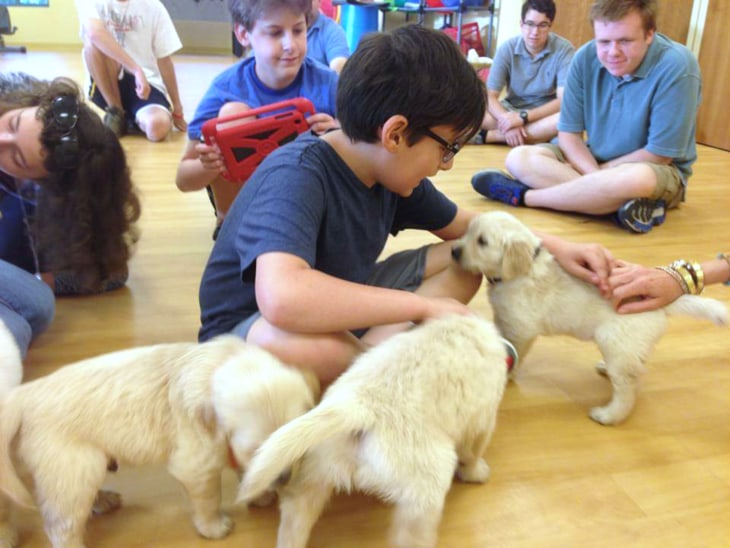
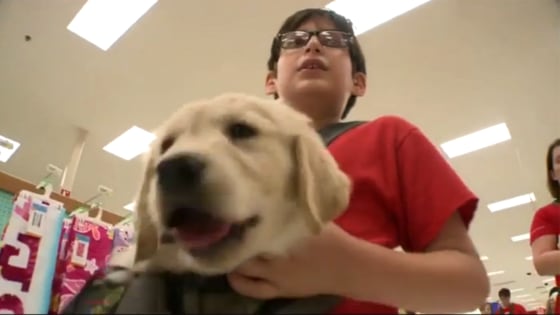
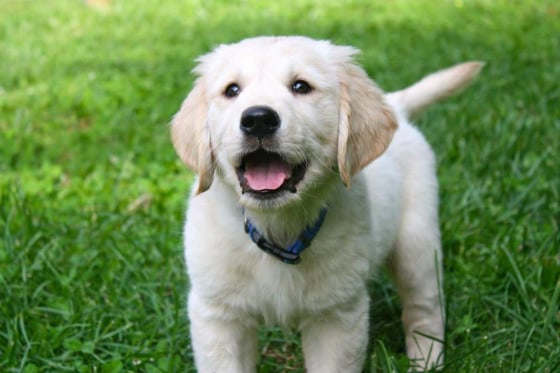

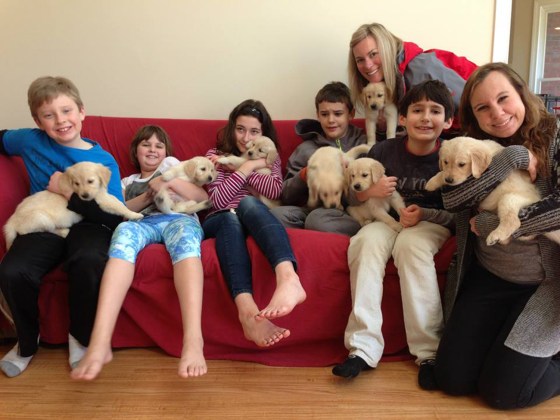
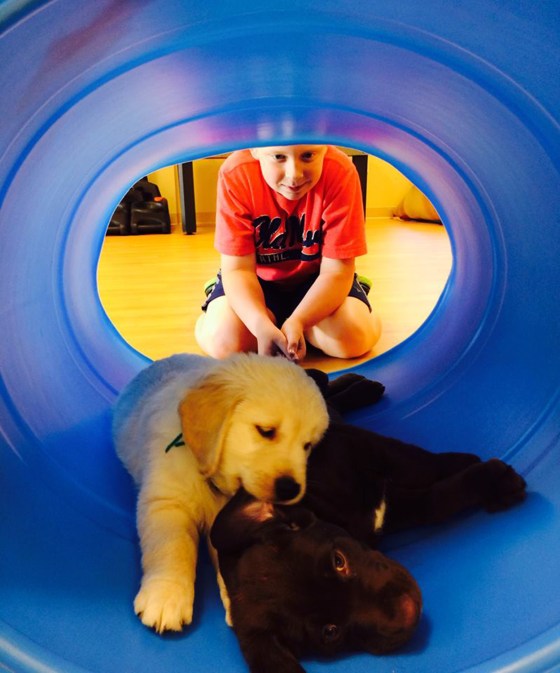






 The “Not So Safe” or No-No Pet Food List
The “Not So Safe” or No-No Pet Food List
.jpg) The "perfectly beautiful son" has a son of his own.
The "perfectly beautiful son" has a son of his own.